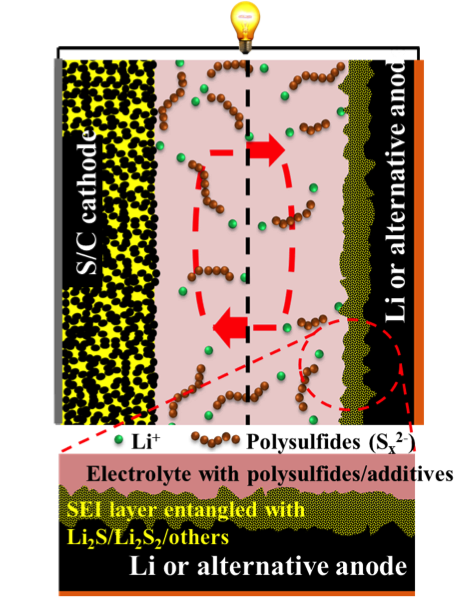
Scientific Achievement
- Recent developments on the protection of the Li metal anode in Li-S batteries are reviewed.
- The degradation mechanism of Li metal anode in Li-S batteries were analyzed and discussed.
- Various strategies used to minimize the corrosion of the Li anode and to mitigate the effect of the side reactions were introduced.
Significance and Impact
- Other alternative anodes used in sulfur-based rechargeable batteries, such as graphite carbon and silicon, were also discussed.
- The challenges and future research directions to enable Li anode with long-term cycling stability for Li-S batteries, are reviewed and recommended.
Research Details
- The stability of the anode is one of the more urgent challenges in order to reach long-term cycling life in Li-S batteries. This work provides the insight and the guidance for the future anode development for Li-S batteries. This will help to accelerate the commercialization of Li-S batteries.
Work performed at Pacific Northwest National Laboratory (JCESR partner), Environmental Molecular Sciences Laboratory, U.S. Army Research Laboratory by R. Cao, W. Xu, D. Lv, J. Xiao and J. G. Zhang. Adv. Energy Mater., 2015.

